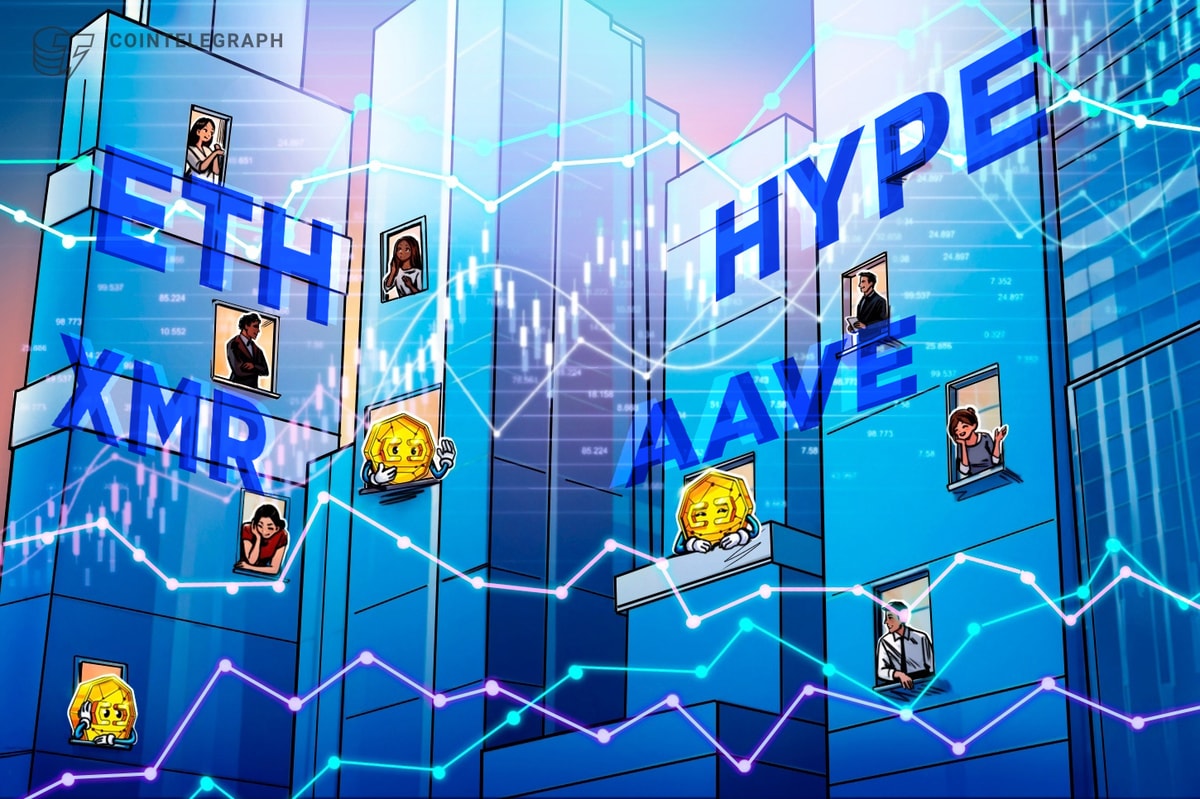
Sergey Vasylchuk is the Co-founder & CEO of the staking provider Everstake.
__________
Our company, Everstake, has been in the validation business for almost five years. And while our revenue model heavily relies on incentivizing people to stake their crypto, seeing that some of them don’t really understand what staking is has always been quite disheartening for me.
Failing to comprehend what you’re doing inevitably leads to trouble. And in this case, it might be trouble for the entire community.
Being responsible is one of the core requirements for any validator on any proof-of-stake (PoS) blockchain. It’s absolutely fair and reasonable. Otherwise, those blockchains would stop working quite soon.
But what we often tend to ignore is that the community has its own share of responsibility, too. In this piece, I’ll explain what it’s all about.
Start with the Basics
For starters, sometimes we need to explain how a PoS-based economy is different from a proof-of-work (PoW) one.
PoW blockchains depend on the computational power of miners. The more powerful your equipment, the more likely you are to mine a new block and get new coins as a reward. In this case, the coins represent nothing but value imposed on them by the community.
In PoS blockchains and their variations like DPoS, a coin represents more than just value: it’s also a governance right. Put simply, owning a coin on a PoS blockchain grants you the right to influence its further development and progress through voting.
But quite often, you don’t have enough funds (and coins) to run and maintain your own node, which would allow you to make decisions affecting the entire network. That’s where validators come into play.
Running your own node is quite an expensive endeavor. Not only do you need the equipment, but you also need to service it 24/7, which requires some profound DevOps expertise. It’s simply cheaper and less troublesome to have someone else do that for a fee that is incomparably lower than your own potential expenses on running a node.
A validator is very much like your representative in a parliament. While you may wield the source of power in your country as its citizen, you actually have only a fraction thereof, much like most of your compatriots. Instead, you delegate your governance rights to someone you trust. That’s the gist of representative democracy. And also, that’s the gist of PoS blockchains.
We don’t need to go very far to see what happens when people delegate their power to delinquents. Just like an incompetent government might rule their country into oblivion, irresponsible validators could put a blockchain on the brink of extinction solely by failing to do their job right.
This very fact alone means that the community must feel responsible for the fate of the blockchain whose tokens they hold. This directly impacts the profitability of their purchase, at the very least.
But instead, we often see that the only thing people are interested in is the Annual Percentage Rate (APR). Moreover, the typical way of thought suggests that the higher the APR is, the better for the delegator. And, believe it or not, it is just as big a problem.
How High APR Can Be Evil
While the crypto economy is often hailed as superior to the fiat one, it primarily concerns the technological aspect, leaving behind the fact that they’re not so very different from the economic standpoint.
When the US Federal Reserve System (FRS) starts printing new dollars, it’s pretty apparent to everyone that a surge of inflation is afoot. But when you get your staking rewards, you actually do the same: you validate transactions of existing coins and, for doing so, get similar coins out of thin air. It is the very same inflation model that we see in the fiat economy. For good or for bad, it’s just how things work in our world in this day and age.
APR, the most popular metric for most people who weigh on whether they should start staking, is, in fact, the inflation rate of the blockchain in question.
And inflation means that the asset’s value is gradually diluted, and so is the user’s share in the blockchain’s governance. The core problem here, however, is that people tend to disagree on what this value actually means.
To many people, I have to admit, the value is measured in the exchange rate of the coin to USD. This kind of user is mainly after the quick buck, and they don’t give much thought to what sort of blockchain they’re investing in by staking their coins.
The real value of a coin, however, is in the power it grants its holder to influence the direction the blockchain takes and, therefore, its success. The more successful a blockchain is, the higher its tokens are valued in USD. So, in a way, ignoring this aspect actually harms their plans to make money.
The same logic suggests that there are better ideas than seeking blockchains with higher APRs. An APR of 20% means that the inflation rate is through the roof. You would start panicking about your well-being if it were US dollars, pounds, or euros. Why are you happy when it’s crypto? It’s just as bad for you.
When a PoS blockchain has an APR of 20%, it means that its model is flawed and seeks to attract more users rather than create a sustainable model. It becomes apparent later when it turns out that their customer base growth seriously lags behind the APR, leading to accelerated value dilution and, eventually, to the devaluing of the blockchain itself. I can compare it to a country whose currency becomes a bunch of worthless paper due to unreasonable economic policy.
Moreover, some blockchains don’t even need staking for their functioning, and they add it artificially to attract more users. Just take a moment and think about it: if a blockchain doesn’t need staking to produce new coins, it might be just a machine for creating coins without any intrinsic value.
This evokes particular words in my mind. One of them starts with a “P” and ends with an “onzi.”
But even if staking is required for a blockchain’s effective functioning, people should still look out for its operation’s fundamentals. A healthy model often sees the yearly growth of the customer base overtaking the inflation rate (or APR, if you like). This makes the system more balanced and more likely to survive. Caring about things like that is what makes a delegator just as responsible as a validator.
That said, not all validators are equally responsible. But even among the most irresponsible ones, nothing and no one can compare to cryptocurrency exchanges.
Exchanges Can Ruin Everything
At the dawn of PoS blockchains, the most common question in the community was: are those “validators” trustworthy? Can’t they collude to overtake the blockchain?
In my practice, it’s a rare stroke of luck if you happen to agree with many people on where to go for lunch, let alone conspire to hijack a complex distributed ecosystem. All validators have their skin in the game, and that’s exactly how the ecosystem ensures that none of them would do things to harm it intentionally. And, to my knowledge, no validator has ever done that.
That’s not the case for exchanges. Unlike validators, they don’t have any skin in the game.
They’re more like an institutionalized version of those irresponsible users who just want to get rich quickly and don’t care about long-term ramifications. Exchanges pursue their own interests, and providing staking opportunities is just one more revenue stream for them. Unsurprisingly, they treat it as such.
While holding immense user assets in custody, they effectively control them and prevent users from exercising their voting rights through a representative. An exchange can vote if it pleases. Or it can ignore all voting altogether.
They can just neglect their nodes for days, as we saw in the case of Kraken last year. In theory, an exchange can destroy a blockchain by voting or not voting on behalf of many people who would have wanted otherwise. In the real world, we call it usurpation. In the crypto world, we often act as if it’s just the way things must be.
The instances of Kraken or FTX prove beyond the shadow of the doubt that exchanges cannot be trusted with holding your assets, let alone staking them on your behalf. And if an exchange faces problems with regulators, liquidity, or literally anything, the last thing it would care about is user interests. And it’s the users who will pay for the exchange’s screw-ups.
Final Thoughts
If I were to sum up everything I said, it would be this simple thought: greed is bad.
You can track down every problem that I mentioned here to human avarice. It may be the avarice of someone who doesn’t care about the future value of their holdings and seeks only to make a quick buck. It may be the avarice of an exchange that puts its own interests ahead of those of blockchains.
We must truly understand the true nature of staking, with its pros and cons, if we want this Web3 concept to move forward and bring about a better world. If we don’t, human greed will corrupt our best efforts.
____
Learn more:
– Ethereum Core Developers Announce Date for Long-Awaited Shapella Upgrade – Here’s What You Need to Know
– South Korean Regulator Is Probing Crypto Staking Services
– Our Company Survived a Crypto Winter and Will Do It Again: Here’s Our Survival Guide for Crypto Businesses
– One Misconception and Severe Design Flaw of the Ethereum Merge
– What is Proof-of-Stake?
– How to Stake ETH for Ethereum 2.0?
Read More: cryptonews.com








 Bitcoin
Bitcoin  Ethereum
Ethereum  Tether
Tether  XRP
XRP  Solana
Solana  USDC
USDC  Dogecoin
Dogecoin  Cardano
Cardano  TRON
TRON  Lido Staked Ether
Lido Staked Ether  Wrapped Bitcoin
Wrapped Bitcoin  Sui
Sui  Wrapped stETH
Wrapped stETH  Chainlink
Chainlink  Avalanche
Avalanche  Stellar
Stellar  Hyperliquid
Hyperliquid  Shiba Inu
Shiba Inu  Hedera
Hedera  LEO Token
LEO Token  Bitcoin Cash
Bitcoin Cash  Toncoin
Toncoin  Litecoin
Litecoin  USDS
USDS  Polkadot
Polkadot  WETH
WETH  Monero
Monero  Bitget Token
Bitget Token  Binance Bridged USDT (BNB Smart Chain)
Binance Bridged USDT (BNB Smart Chain)  Wrapped eETH
Wrapped eETH  Pepe
Pepe  Pi Network
Pi Network  Ethena USDe
Ethena USDe  Coinbase Wrapped BTC
Coinbase Wrapped BTC  WhiteBIT Coin
WhiteBIT Coin  Dai
Dai  Bittensor
Bittensor  Uniswap
Uniswap  Aave
Aave  NEAR Protocol
NEAR Protocol  Aptos
Aptos  OKB
OKB  Jito Staked SOL
Jito Staked SOL  BlackRock USD Institutional Digital Liquidity Fund
BlackRock USD Institutional Digital Liquidity Fund  Ondo
Ondo  Cronos
Cronos  Tokenize Xchange
Tokenize Xchange  Ethereum Classic
Ethereum Classic